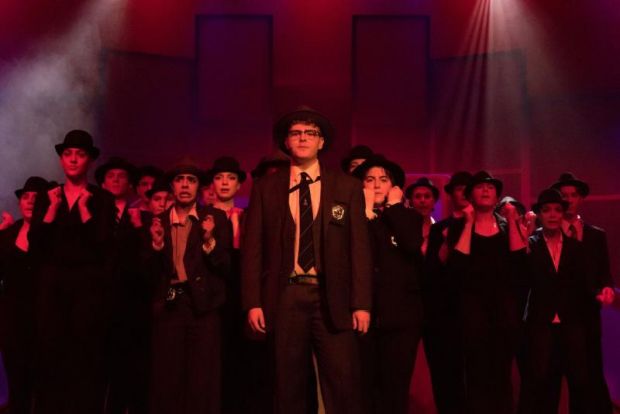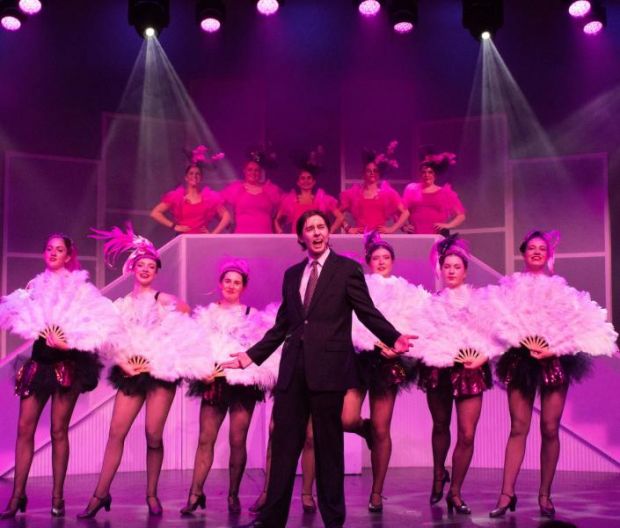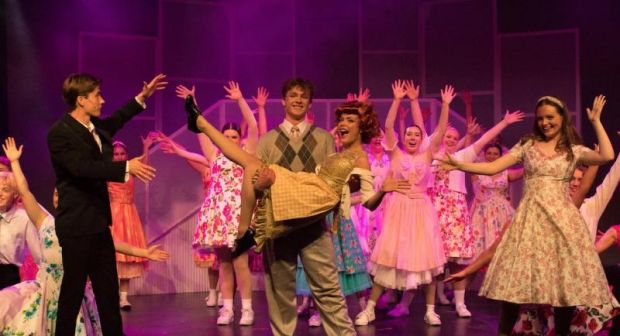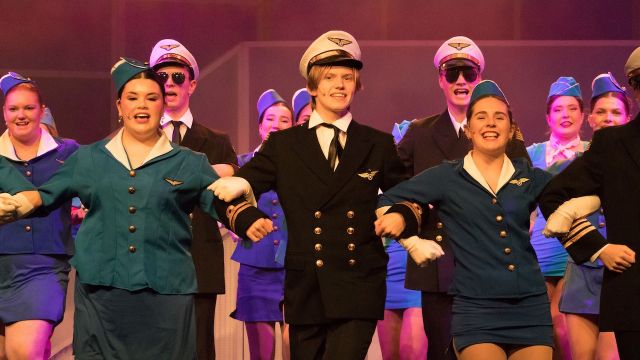Catch Me If You Can
Book by Terrence McNally. Score by Marc Shaiman and Scott Wittman. Rosny College, Tasmania. Clare Latham (Direction). Roz Wren (Set). Suze Quinn and Matthew Ives (Musical Direction). Hannah Marmion and Madison Heidenreich (Choreography). Gareth Keys (Lighting). Samantha James-Radford (Vocal Coaching). Nicole Ottrey (Costumes). The Dwight Brown Auditorium. 6-15 June, 2024
Marc Shaiman and Scott Wittman wrote the score for Hairspray. While the songs in Hairspray may be more memorable, the score for Catch Me If You Can is very well written. There are many production numbers which fill the stage with light and colour and many solos and duets which allow for significant character development.
The show inevitably hinges on the casting of Frank Abergnale Jr. Isaac Nichols comes to the role with an ingenuous charm which makes the villain very sympathetic. Nichols gives an Abergnale which is charismatic, credible, and conflicted. Nichols has a strong voice, not always even over the demanding range of the part, that he uses to characterise the part. One can only assume the Christian Mousley, who shares the role, was equally as good.

The pocket rocket which is Grace Wiggins almost steals the second act as Carol Strong. Wiggins is a gifted comedian with great physicality. “Family Tree” was a riot in which choreography and a great wig provide the comic release before the plot reaches the culmination of Abergnale’s inevitable apprehension.
Sophie Cashion (who recently played Fiona in the Shrek for the Hobart Summer School) was the other final quarter goal kicker. Her “Fly, Fly Away” began suitably restrained and built to a powerful and emotional climax. Her sweet duet with Abignale Jr “Home is Where You Are” articulates one of the themes of the show.
Ashley Cruise as Frank Abignale Sr. was suitably slimy. The father’s relationship with his son is of significant interest in Abignale Jr’s search for family. The evolving dynamic between them is played out in several duets.

The role of the parent is also explored through interactions with FBI agent Carl Hanratty, played by Finn Hatton. Hatton is poised and secure as a character who is challenged by his interactions with Abergnale Jr and Sr. Flanked by three comic goons in the Bureau, Hatton is an able foil to Nichols. Hatton’s is a mature performance. “Little Boy, Be A Man” was excellent for Hatton and Cruise.
Olivia Goerss shines in several smaller roles. Hers is a compelling voice. The vocal coaching of Samantha James-Radford is evident in many of the performances.
The choreography, shared by Hannah Marmion and Madison Heidenreich, is a notch above the usual. Big numbers involving stereotypical sexy nurses and airline stewards were more inventive than might otherwise have been the case. The choreography drew on elements of the golden age of Hollywood and jazz. The large ensemble filled the stage. Interesting shapes (such as an aeroplane), physical canons, rhythmic postures and the use of levels provide much interest. “Don’t Break the Rules” was a favourite.

The set consists of a lit cyclorama before which are suspended several illuminated panels and a “bridge” all of which had the ability to be lit in a variety of colours.
Catch Me If You Can is an excellent vehicle for a college musical. The ensemble is kept busy in a variety of roles and the effort in costuming such a large group in a diversity of styles is appreciated. The roles for principles are demanding. All give considered and well-developed performances that ask questions about the nature of addiction and human connection. Abergnale Jr. admits that his apprehension “could be his start” and the final message is that redemption and family is always possible.
Anne Blythe-Cooper

